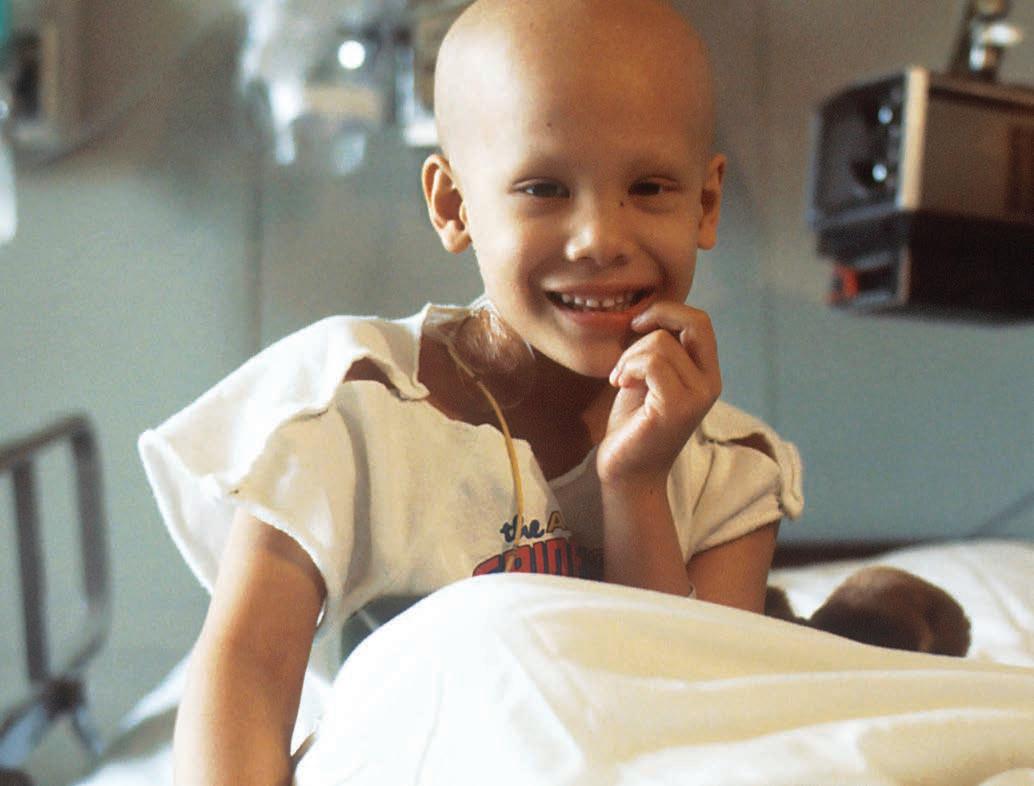
5 minute read
Health & Science
Medical and scienti c research has never been as advanced as it today, especially when it comes to nding better treatments and, indeed, cures for cancers.
Cancer is one of the world’s biggest killers, leading to 10 million deaths in 2020.
Advertisement
But scientists are using arti cial intelligence, DNA sequencing, precision oncology and other technologies to improve treatment and diagnosis of the disease.
Breakthroughs include the DNA sequencing of more than 12,000 cancer tumours and a new test for diagnosing pancreatic cancer – one of the deadliest cancers.
Cancer killed nearly 10 million people in 2020 and is a leading cause of death globally, according to the World Health Organisation (WHO).
Breast cancer, lung cancer and colon cancer are among the most common cancers.
Death rates from cancer were falling before the pandemic. Now COVID-19 has caused a big backlog in cancer diagnosis and treatment.
But medical advances are continuing to help the world ght cancer. Here are some recent developments.
Precision oncology
Precision oncology is the “best new weapon to defeat cancer”, the chief executive of Genetron Health, Sizhen Wang, says in a blog for the World Economic Forum. is involves studying the genetic makeup and molecular characteristics of cancer tumours in individual patients. e precision oncology approach identi es changes in cells that might be causing the cancer to grow and spread.
Personalised treatments can then be developed. Because precision oncology treatments are targeted – as opposed to general treatments like chemotherapy – it can mean less harm to healthy cells and fewer side e ects as a result.
In India, World Economic Forum partners are using emerging technologies like arti cial intelligence (AI) and machine learning to transform cancer care. For example, AIbased risk pro ling can help to screen for common cancers like breast cancer, leading to early diagnosis.
AI technology can also be used to analyse X-rays to identify cancers, in places where imaging experts might not be available. ese are two of 18 cancer interventions that e Centre for Fourth Industrial Revolution of the World Economic Forum India hopes to accelerate.
Hospitals have sequenced the DNA of more than 12,000 cancer tumours to reveal new clues about the disease.
At Cambridge University Hospitals in England, the DNA of cancer tumours from 12,000 patients is revealing new clues about the causes of cancer, scientists say. By analysing genomic data, oncologists are identifying di erent mutations that have contributed to each person’s cancer.
For example, exposure to smoking or UV light, or internal malfunctions in cells. ese are like “ ngerprints in a crime scene”, the scientists say – and more of them are being found. “We uncovered 58 new mutational signatures and broadened our knowledge of cancer,” says study author Dr Andrea Degasperi, from Cambridge’s Department of Oncology.
Biopsies are the main way doctors diagnose cancer – but the process is invasive and involves removing a section of tissue from the body, sometimes surgically, so it can be examined in a laboratory. Liquid biopsies are an easier and less invasive solution where blood samples can be tested for signs of cancer. Synthetic biopsies are another innovation that can force cancer cells to reveal themselves during the earliest stages of the disease.
A treatment that makes immune cells hunt down and kill cancer cells was recently declared a success for leukaemia patients. e treatment, called CAR-T-cell therapy, involves removing and genetically altering immune cells, called T cells, from cancer patients. e altered cells then produce proteins called chimeric antigen receptors (CARs). ese recognise and can destroy cancer cells. In the journal Nature, scientists at the University of Pennsylvania announced that two of the rst people treated with CAR-T- cell therapy were still in remission 12 years on. nature
Pancreatic cancer is one of the deadliest cancers. It is rarely diagnosed before it starts to spread and has a survival rate of less than 5% over ve years. At the University of California San Diego School of Medicine, scientists have developed a test that was able to identify 95% of early pancreatic cancers in a study. e research, published in Nature Communications Medicine, explains how biomarkers in extracellular vesicles – particles that regulate communication between cells – were used to detect pancreatic, ovarian and bladder cancer at stages I and II.
Winning the war on cancer

Imagine doing nothing at all, absolutely zero
Bet ye didn’t know this, but one of the most popular behaviours or pastimes down through history has been doing nothing at all. Absolutely nothing. Nowt. Zero. e Greeks, in particular, excelled at it.
We seem to have forgotten how to perform or do nothing. e closest we come to it these days is sleeping or resting. But when was the last time you did absolutely nothing?
When was the last time you stared out of a window for a long period of time? Can you remember the last time you sat in a park and just looked around? Have you ever just laid on your back and looked deep into the sky?
We live in a world where something is expected of us every moment. Either we’re working, socialising, cooking, cleaning, eating, drinking, travelling, scrolling through social media, or watching Net ix We’re always going somewhere or trying to get something.
We live in a culture that abhors doing nothing which is evident in our frantic work schedules and constant need to be entertained.
Imagine if you had the monk-like peace of mind to just put a stop to all of the doing and lived completely in what Eckhart Tolle calls ‘ e Now’. Seems impossible, right?
In the ‘Tao Te Ching’ philosopher Lao Tzu challenges people to balance all of the something they’re constantly up to by also learning to embrace the nothing. “When nothing is done, nothing is left undone,” the philosopher famously said.
Dr Manvir Singh, a research fellow at the Institute for Advanced Study in Toulouse and a Ph.D. from Harvard’s Department of Human Evolutionary Biology, called attention to our inability to do nothing on Twitter recently.
Dr Singh shared a tweet thread that highlighted a study from the ‘70s and ‘80s in small-scale non-industrial societies where researchers noted activities people engaged in throughout the day. e shocking fact — at least from today’s perspective — is that idling or “doing nothing” was one of their favourite activities.
In the 1970s and ‘80s, anthropologists working in small- scale, non-industrial societies fastidiously noted down what people were doing throughout the day. e anthropologists visited random people during waking hours and recorded what they were doing, building a representative sample of time use. Most of these data were collected while an anthropologist lived with the community for a year. e researchers typically chose among 60 activity codes, one of which was ‘Idle, doing nothing’. is is di erent from napping, chatting, xing tools, tidying up, and idleness because of illness. As far as we can tell, it’s really about doing nothing at all, at least apparently.









